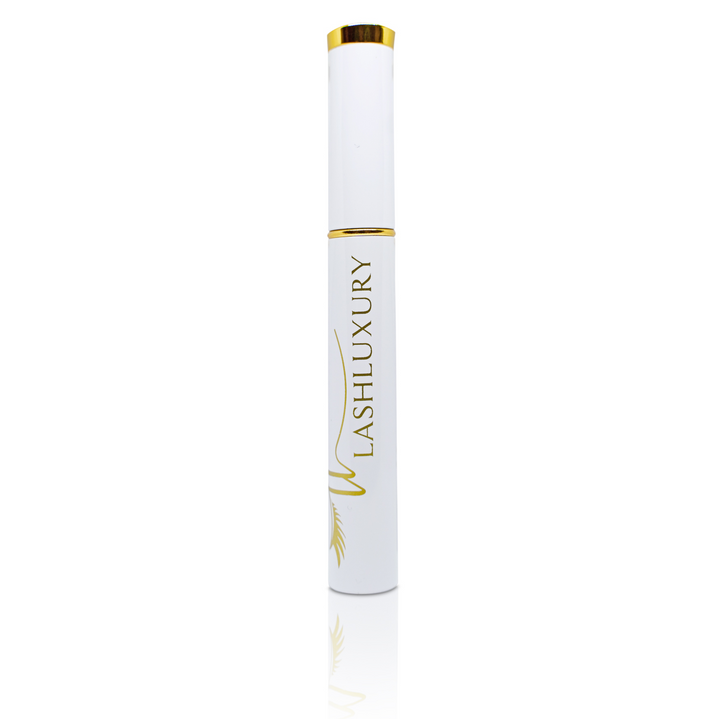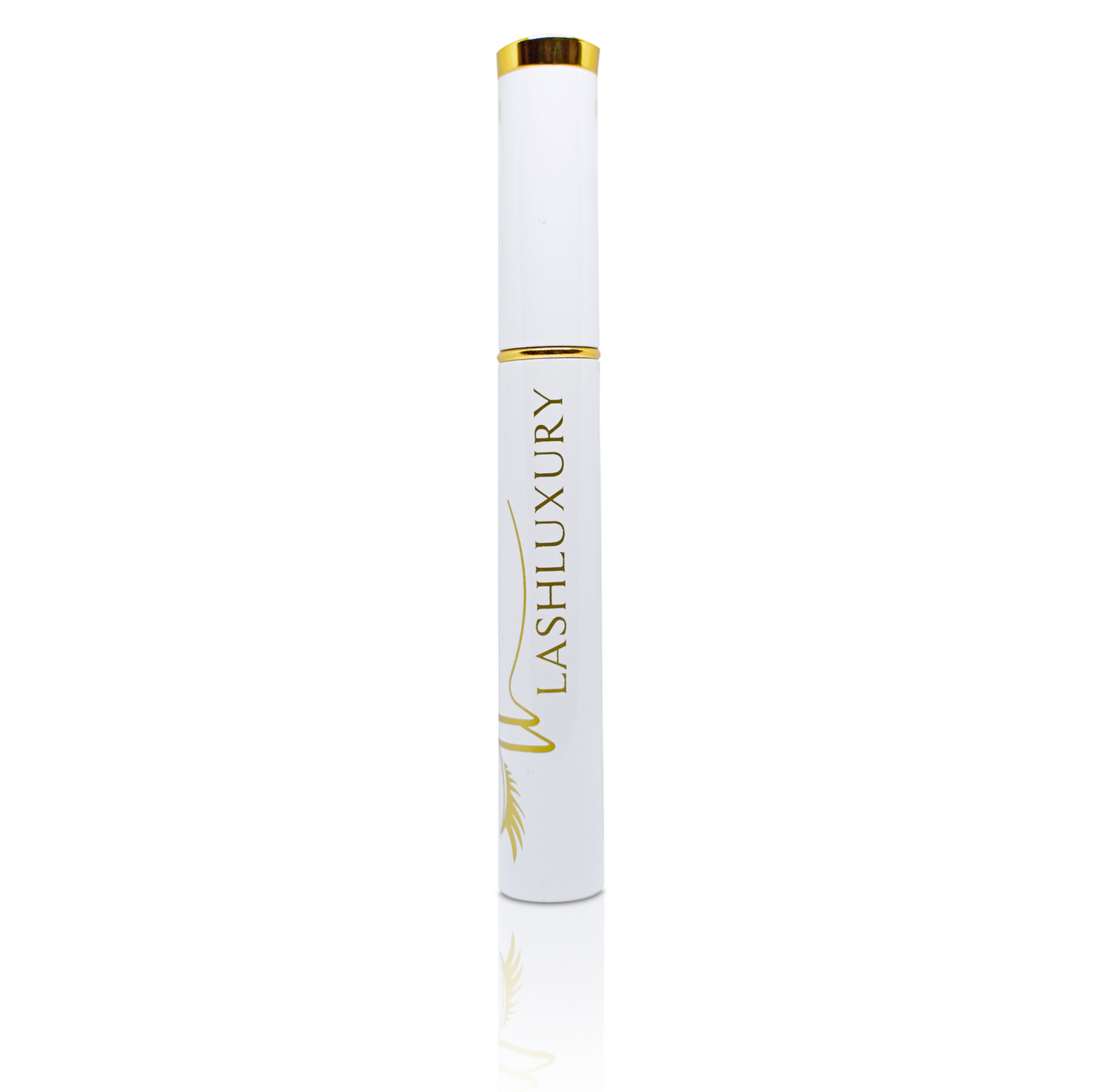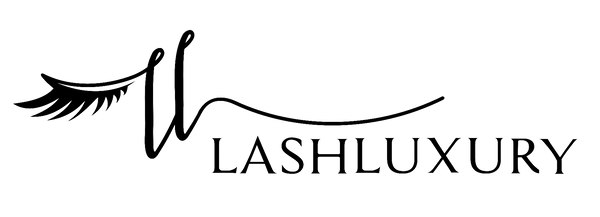***Editor's Update - April 30, 2021***
Thanks to the editors at Femestella for sharing our research with their readers! Check out their Guide To Eyelash Serums for even more great information.
***
What is an eyelash serum?
We’ve been asked millions of times by potential customers “how does your eyelash growth serum work?” or “what exactly is a lash serum?”
In this article we are going to present a definitive guide to eyelashes and lash serums in an insightful and easy to read format.
We’ll answer frequently asked questions and help you understand what to look for in an eyelash growth serum when evaluating all of the different products on the market.
The information presented below was key to the creation of our very own daily eyelash serum which has received highly positive feedback from our customers.
You might also like this article: The 5 Best Eyelash Growth Products For 2022
Eyelashes in society
Our eyes play an important part in human interaction. They are one of the first things we notice about a person and they can tip us off to someone’s thoughts without them having to speak.
Long, healthy eyelashes accentuate our eyes and can make them more attractive to others.
Since the days of ancient Egypt, people have used makeup to enhance their lashes. In fact, even men used to style their lashes!
Since society places such huge value on beautiful eyes, many cosmetic brands have attempted to create products to boost the density of your eyelashes and frame your eyes. Before we can understand how a lash serum really works however, we have to understand our eyelash anatomy.
Eyelash anatomy
The human eyelash growth cycle follows three important phases:
- Anagen (Growth phase)
- Catagen (Degradation phase)
- Telogen (Resting Phase)
At the end of the telogen phase, our eyelashes fall out and the follicle transitions back to the anagen phase and a new eyelash grows in.
Our eyelashes follow a similar cycle to our head hair, except that the growth phase is only 1-2 months for our lashes vs. up to 6 years for the hair on your head.

The human eye typically has 80 lower lashes and up to 160 upper lashes. The range of our upper lashes is between 90 and 160 individual eyelashes, which explains why some people have sparse lashes and some people have incredibly full and long eyelashes.
The primary purpose of our eyelashes is to protect our eyes from dust and debris from entering our eyes.
They are incredibly sensitive to touch and provide a natural warning indicator that an object is too close to your eye.
Many animals have evolved to grow eyelashes as well.
The animal with the longest eyelashes, the mighty giraffe, feeds mainly on the leaves and twigs of acacia trees. These trees have been nicknamed “Devil Thorns” in Africa due to their dangerously sharp and hooked thorns.
Eating from a tree with such a nasty defense mechanism requires a high level of precision and scientists believe that the Giraffe’s sensitive eyelashes help them navigate the thorns in order to safely get to their meal.

Eyelash health
If you are asking yourself “why are my eyelashes so thin?” here are some common causes of sparse lashes and eyelash loss:
- Age (we all experience lash loss with age)
- Using falsies and eyelash extensions
- Irritation from cosmetic products and improper makeup removal
- Blepharitis (Clogged oil glands causing inflammation)
- Trichotillomania (stress induced habitual eyelash rubbing or plucking)
According to an article from the American Academy of Ophthalmology, reviewed by Dr. Laurie Gray Barber, there might be a serious underlying health issue causing your lash loss and you should see a doctor if:
- You are losing eyelashes on both lids
- You are also experiencing hair loss on your scalp or eyebrows
- You have itchy, red or scaly skin
- You feel pressure on or around your eyes
- You experience any vision loss
Good eyelash hygiene goes a long way in preventing lash loss.
You might also like this article: How long does it take for eyelashes to grow back?
Best practices include using a gentle soap and water to wash your eyes on a daily basis. You should also eat a healthy diet of proteins, fruits, vegetables and ample iron to maintain long, full eyelashes.

Eyelash serums
Now that you’re an expert on the anatomy of your eyelashes, we’ll dive into the ingredients that go into popular lash serums.
You’re going to see that all lash serums are not the same and you’ll have a good understanding of what makes “a good lash serum.”
First, let's start with a simple question.
What is a lash serum?
There are actually a number of names that different brands use for their lash serum. “Eyelash growth serum,” “lash conditioner,” “lash booster” and many more.
The purpose of all of these products is to help you grow longer and thicker eyelashes.
The only FDA approved option for longer lashes is a medication called bimatoprost which is sold under the brand name Latisse®. Bimatoprost is also sold as Lumigan® and is used to treat glaucoma.
Regular application of Latisse® has been shown to gradually encourage the growth of longer, thicker and darker eyelashes.
The Mayo Clinic lists a number of potential side effects of Latisse® including:
- Redness of the thin tissue over the eye called conjunctiva
- Itchy and dry eyes
- Darkened skin around the eyelids
- Darkened pigmentation in the iris (coloured part of the eye)
- Unwanted hair growth on areas of the body if the medication runs off
Prostaglandins and eyelash safety
Bimatoprost is a type of prostaglandin. Prostaglandins are groupings of lipids that control a number of important processes in your body including:
- Healing wounds (causing pain, inflammation and fever)
- Blood clotting
- Pregnancy (labour and ovulation)
Prostaglandins have been a key area of research due to their potent effects on the human body. After bimatoprost was discovered, a number of very similar prostaglandin analogs were created that are used in many eyelash growth serums. They are:
- Latanoprost
- Isopropyl chloroprostenate
- Dechloro Dihydroxy Difluoro Ethylcloprostenolamide
Because of the hormone-like effects of these chemicals they are banned from use in cosmetics and highly regulated in Canada. Canada lists nearly 20 prostaglandins on its Cosmetic Ingredient Hotlist.
Unfortunately, the reputation of the lash serum product category has been under fire in recent years due to some bad behaviour by a certain multi-level marketing cosmetic company.

Peptides for eyelash growth
Another category of ingredients that have proven lash boosting properties are called peptides. Peptides are short chains of between 2 and 50 amino acids that are linked by peptide bonds.
Amino acids and peptides are the building blocks of protein. Interestingly, your hair is almost completely composed of a single protein called keratin.
Scientists have found that certain groupings of peptides, bioactive peptides, have beneficial impacts on various body functions including:
- Collagen peptides (anti-aging)
- Creatine peptides (muscle building)
- Keratin peptides (hair strengthening)
Bioactive peptides have been shown to be strong antioxidants with anti-inflammatory effects. They have also been proven to have collagen and keratin stimulating properties which is their main reason for use within lash serums.
The inclusion of the right mix of peptides in a lash serum formula can help extend the growth phase (anagen) of your eyelash growth cycle resulting in fuller and longer looking lashes.
Some of the bioactive peptides that are found in the top selling lash serum brands include:
- Myristoyl Pentapeptide-17
- Copper Tripeptide-1
- Octapeptide-2
- Biotinoyl Tripeptide-1
- Acetyl Tetrapeptide-3
According to Medical News Today, products that use peptides are unlikely to cause side effects because they are similar to the peptides found in everyday protein-rich foods. Medical News Today also notes that “individuals should always buy from a reputable company and discontinue use if adverse reactions occur.”

Vitamins for eyelash health
Vitamins are another important ingredient which is important for long, healthy eyelashes.
Vitamins play a major role in our body’s overall health. Eating nutrient rich food and drinking plenty of water are important routines that we should all follow to maximize not just the health of our lashes, but our whole body.
There has been a lot of research on the important role that certain vitamins play in the health of our hair and nails. Here are the most important vitamins for eyelash health.
B vitamins are known to play a large role on your energy levels, brain function and cell metabolism. They also help prevent infections and support cell health.
- Vitamin B5 (panthenol) protects our lashes from environmental damage and is a powerful moisturizer. Hydrated eyelashes are better able to transport nutrients throughout their structure and prevent breakage.
- Vitamin B7 (biotin) boosts the health of our hair, nail, lashes and brows. Biotin helps regulate your body’s keratin infrastructure, which we know is the most important protein needed for healthy hair and lashes.
Vitamin E and D are antioxidants and can help reduce free radicals. Free radicals are unstable atoms that can cause damage and ageing effects to our skin.
- Vitamin E (tocopheryl acetate) is known for its innate antioxidant properties. Vitamin E acts as a conditioner for your eyelashes and can help replenish your body’s natural oils.
- Vitamin D (calcitriol) can reduce lash shedding by stimulating the lash follicles. Your body can produce vitamin D with as little as 10 minutes of sunlight, 3 times per week.
PSA: Don’t forget sunscreen If you are going into the sun for your vitamin D!
Plant extracts for your lashes
Natural plant extracts have soothing, hydrating and powerful antioxidant properties. When used in eyelash growth serums, plant extracts work to stimulate lash follicles, soothe the lash line and provide key nutrients to the structure of the eyelash.
Here are the top evidence-based plant extracts used in lash serums.
- Aloe Vera is widely known for its ability to aid in treating burns, wounds and bites but It has other benefits beyond skin regeneration. The enzymes in aloe vera help dissolve dead skin cells and excess sebum which can clog lash follicles.
- Rosemary is often used to alleviate stress due to its soothing aroma. It has also been shown to increase circulation in hair follicles when applied as rosemary oil.
- Red clover is a powerful herb that is native to Europe and Asia. Red clover is rich in phytonutrients and studies have shown that it may increase hair growth for individuals with alopecia.
- Castor Oil really deserves its own category since many people use it as a stand-alone lash boosting solution. Castor oil has been around for centuries and is loaded in vitamin E and fatty acids. On hair and eyelashes it acts as an ultra-hydrating conditioner.
- Ginseng may help invigorate lash and hair follicles and add volume at the root. In some studies, it has been shown to slow hair loss in people suffering from alopecia.
- Cucumber may be more famous for its use as part of a spa treatment but there is a good reason up-scale spas slice cucumbers to be used as eye covers. Cucumber has been used in traditional indian medicine for a long time. The antioxidants in cucumber soothe most skin irritations and reduce inflammation.
It is extremely important for a good lash serum to include soothing ingredients because our eyes are very sensitive to irritants.
Plant extracts have been used since ancient times to help boost the volume of our hair and modern science has proven that many are effective in doing so. You should always be wary of any “miracle” claims however, and stick to products that use ingredients that have researched-backed claims.

Eyelash ingredients to avoid
So far we’ve covered ingredients that are known to help our lashes grow and thrive.
We must now highlight the ingredients that show up in many lash serums that have no place anywhere near your eyes.
If you search for “eyelash growth serum” on Amazon.com you’ll be bombarded with 1,000 products that claim to work. They might even have 100s of reviews from customers singing their praises.
With a little digging you’ll see that many of these products are either made in China with low regulatory oversight or contain ingredients that are known to be bad for our health or known to irritate our eyes.
Some of the ingredients you need to avoid in your lash serum include:
- Fragrance (Parfum) is an ingredient label for chemicals that add a scent to the product and can refer to any number of parabens. Parabens are listed by the European Commission on Endocrine Disruption as a Category 1 priority substance due to their findings that parabens interfere with hormone function.
- Alcohol, often labeled as denatured alcohol, gives cosmetic products a quick-drying finish. You should avoid lash serums with alcohol at all costs because it can irritate your eyes, dry out your skin and disrupt the surface of your skin’s microbiome.
- Citric acid is derived from citrus fruits and acts as an exfoliant for skin. While it is a useful ingredient for skin products, it should not be used near your eyes as it can cause burning pain if just a drop makes its way into your eye.

Our Top Rated Eyelash Serum
If you’ve made it this far, you should consider yourself an eyelash growth serum expert!
You understand how your eyelashes work as well as the good and bad ingredients found in different lash serums.
If you have want to learn about the LashLuxury daily eyelash serum - consult our FAQ Page.
Daily Eyelash Serum

120.00
⭐️⭐️⭐️⭐️⭐️ "Yes, these are my natural lashes." Imagine waking up to perfectly full, long, and luscious lashes every day without the need for a high-maintenance beauty routine. Our natural eyelash serum was formulated using clinically tested peptides that help boost your eyelash growth cycle and… Read More
If you’ve experienced heightened sensitivities to cosmetics in the past, you should check with your dermatologist or ophthalmologist before using any lash serum to see if it's a fit for your unique needs.
***
Lara Roosevelt


